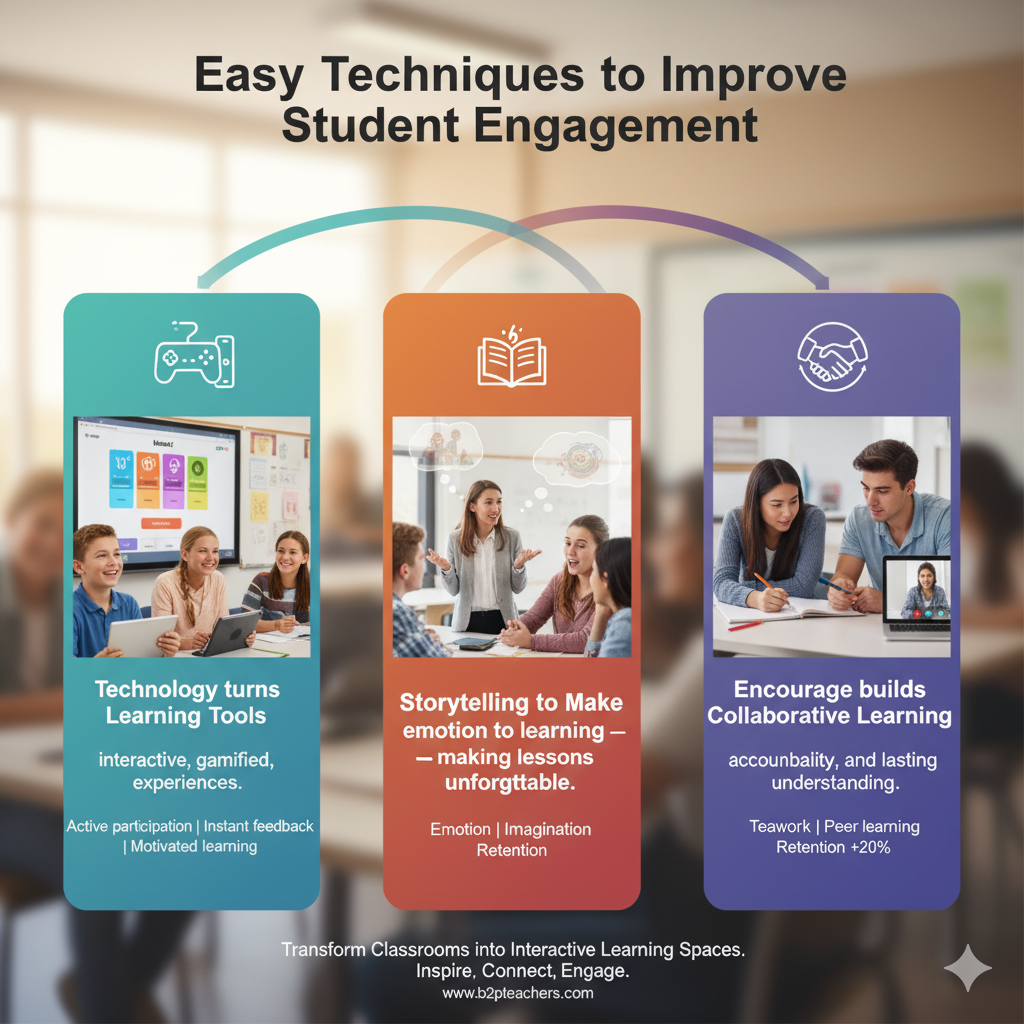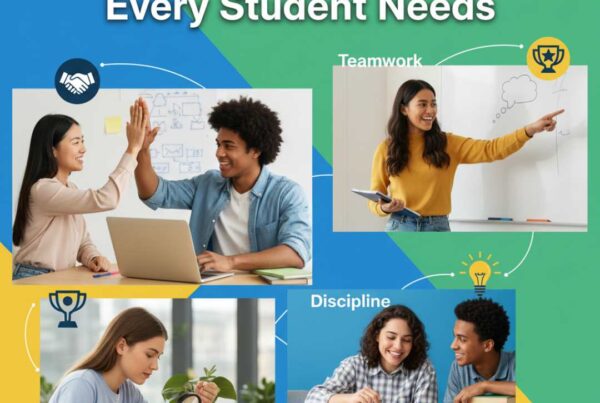Are your students glued to their phones while you’re teaching?
You’re not alone.
Studies show that over 60% of students report feeling disengaged in traditional classrooms, leading to lower retention, participation, and academic performance.
If you want to reverse this trend and make learning exciting again, focusing on student engagement is critical.
In this blog, we’ll explore 7 easy techniques to improve student engagement today, backed by research, actionable strategies, and real-world examples.
By implementing these methods, you can transform your classroom into an interactive, motivating, and high-performing learning environment.
Incorporate Interactive Learning Tools
Technology has revolutionized how students interact with content. Tools like Kahoot!, Quizizz, and interactive polls allow students to actively participate, turning lessons into fun challenges.
Why it works:
- Promotes active participation rather than passive listening.
- Provides instant feedback for students and teachers.
- Gamification triggers excitement and motivation.
FAQ:
Q: Are interactive tools effective for all grade levels?
A: Yes, tools can be customized for younger learners and advanced students alike, enhancing active learning process across the board.

7 Easy Techniques to Improve Student Engagement
Use Storytelling to Make Lessons Memorable
Stories make lessons relatable and unforgettable. When students connect emotionally to content, they remember it longer and engage more actively. Whether it’s a historical event, scientific discovery, or real-life business scenario, storytelling transforms lessons into immersive experiences.
Pro Tip:
Incorporate personal anecdotes, case studies, or scenario-based stories to maximize engagement.
FAQ:
Q: How can storytelling be used in online classrooms?
A: Use video, interactive scenarios, and discussion forums to make stories come alive and boost student engagement even virtually.
Encourage Collaborative Learning
Collaboration drives engagement by creating peer accountability. Activities like group projects, peer reviews, and discussion circles foster teamwork and critical thinking. Research indicates that students in collaborative settings demonstrate a 20% increase in retention rates compared to solitary learning.
Implementation Tips:
- Assign roles to balance participation.
- Utilize digital platforms for virtual collaboration.
- Promote peer teaching for deeper comprehension.
FAQ:
Q: What if some students are reluctant to collaborate?
A: Start with smaller groups, assign clear roles, and gradually increase complexity. This encourages student motivation without pressure.
Apply Active Learning Strategies
Active learning shifts the classroom focus from listening to hands-on application. Techniques such as debates, problem-solving exercises, and simulations empower students to engage directly with material.
Benefits:
- Enhances critical thinking and problem-solving skills.
- Encourages ownership of learning.
- Leads to higher long-term retention of knowledge.
FAQ:
Q: Can active learning work in large classrooms?
A: Yes. Implement live polls, breakout sessions, or team-based quizzes to maintain student interaction even in big groups.
Personalize Learning Experiences
Every student learns differently. Personalized learning tailors assignments, lessons, and feedback to individual strengths and needs. Adaptive learning platforms can automatically adjust content, keeping students challenged without feeling overwhelmed.
Advantages:
- Meets learners at their own level.
- Reduces boredom and frustration.
- Increases motivation and overall student engagement.
FAQ:
Q: Does personalized learning take too much teacher effort?
A: Modern platforms simplify this process, making it feasible even for large classrooms.

7 Easy Techniques to Improve Student Engagement
Foster a Growth Mindset
Students who adopt a growth mindset see challenges as opportunities. They are more likely to engage actively and persevere through difficulties. Encouraging effort over results promotes resilience and a love for learning.
Tips to Implement:
- Praise effort, strategy, and progress, not just grades.
- Share success stories of individuals who overcame setbacks.
- Provide constructive feedback to build confidence.
FAQ:
Q: How do I encourage a growth mindset in disengaged students?
A: Highlight small wins, model positive thinking, and celebrate incremental achievements to spark student engagement.
Connect Lessons to Real-World Scenarios
Students are motivated when they understand the practical relevance of their learning. Linking lessons to careers, current events, and everyday challenges increases curiosity and participation.
Examples:
- Financial literacy projects in math.
- Environmental issues in science.
- Media analysis in language arts.
FAQ:
Q: Can real-world connections work for theoretical subjects?
A: Absolutely. Even abstract concepts can be tied to relatable examples, ensuring consistent student engagement.
Your Action Plan for Maximum Student Engagement
Boosting Student interaction is not optional, it’s crucial for success.
By leveraging interactive tools, storytelling, collaboration, active learning, personalized experiences, growth mindset, and real-world connections, educators can create classrooms where students are motivated, attentive, and excited to learn.
If you’re serious about transforming your teaching methods and seeing measurable improvements in student engagement, consider joining our online coaching program, B2P Teachers.
Our program provides structured strategies, expert guidance, and practical tools to help you implement these techniques effectively in your classroom today.



